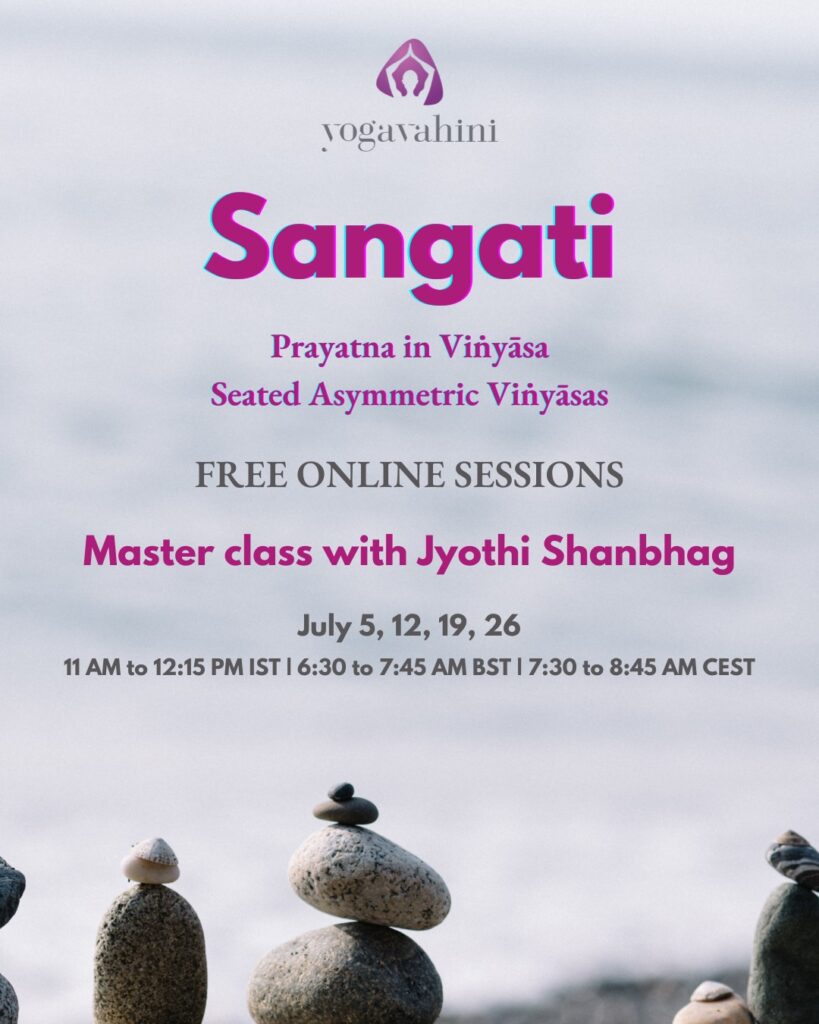
Every asana is a viṅyāsa in Sri Krishnamacharya’s tradition. The meaning of the word Viṅyāsa is to place the body in a special way. (ṅyāsa= to place, vi = in a special way.) . The special way herein implies adhering to the grammar of the āsana and staying in it with sthiram (stability), a long, comfortable breath (sukham) and a focused mind. We need to move, stay and reflect to break the rigidity of the body and the mind. This requires effort: prayatna.
The focus of this series is on Asymmetric Seated Viṅyāsas. Asymmetrical viṅyāsas help us observe the parts of the body with more precision and aid us in establishing balance. As we move towards seated viṅyāsas in viṅyāsa krama, the postures prepare our abdomen, legs and spine to help us stay seated for a good prāṇāyāma and dhāraṇa practice.
Let us explore the āsanas in movement and stay, gradually progressing towards beautiful sequences. This will lead us to a quiet, focused space, will help us befriend our breath through prāṇāyāma and will enable us to watch our mind through dhāraṇa closely.
About the teacher:
Jyothi Shanbhag is an accomplished Yoga Therapist certified by YogaVahini, with a diploma in Yoga from Yoga Rakshanam. Her journey with yoga began back in 2002 when she turned to Yoga Therapy with Yoga Raksanam to address some health issues. Under her teacher’s guidance, Jyothi found a new dimension in life as she healed from within. She has been practising Yoga for over 20 years in the Sri Krishnamacharya tradition and mentoring others at YogaVahini.
Jyothi has extensive experience teaching a diverse range of students, from young children to the elderly. In 2014, Jyothi, together with a dear colleague and support from her teacher, started teaching Asana, Pranayam, and Chanting to children with special needs and their families. Despite the pandemic, Jyothi and her team have continued this teaching week after week for eight years, which has given her a new perspective on the world and the ability to connect with people at a deeper level. Her exceptional skills as a therapist and her ability to create beautiful viṅyāsas loved by both children and adults alike is a testament to her vast experience with children of various needs.
To register, click here
The recordings of the session will be available for viewing for a week after the session in the YouTube Playlist – Sangati.
